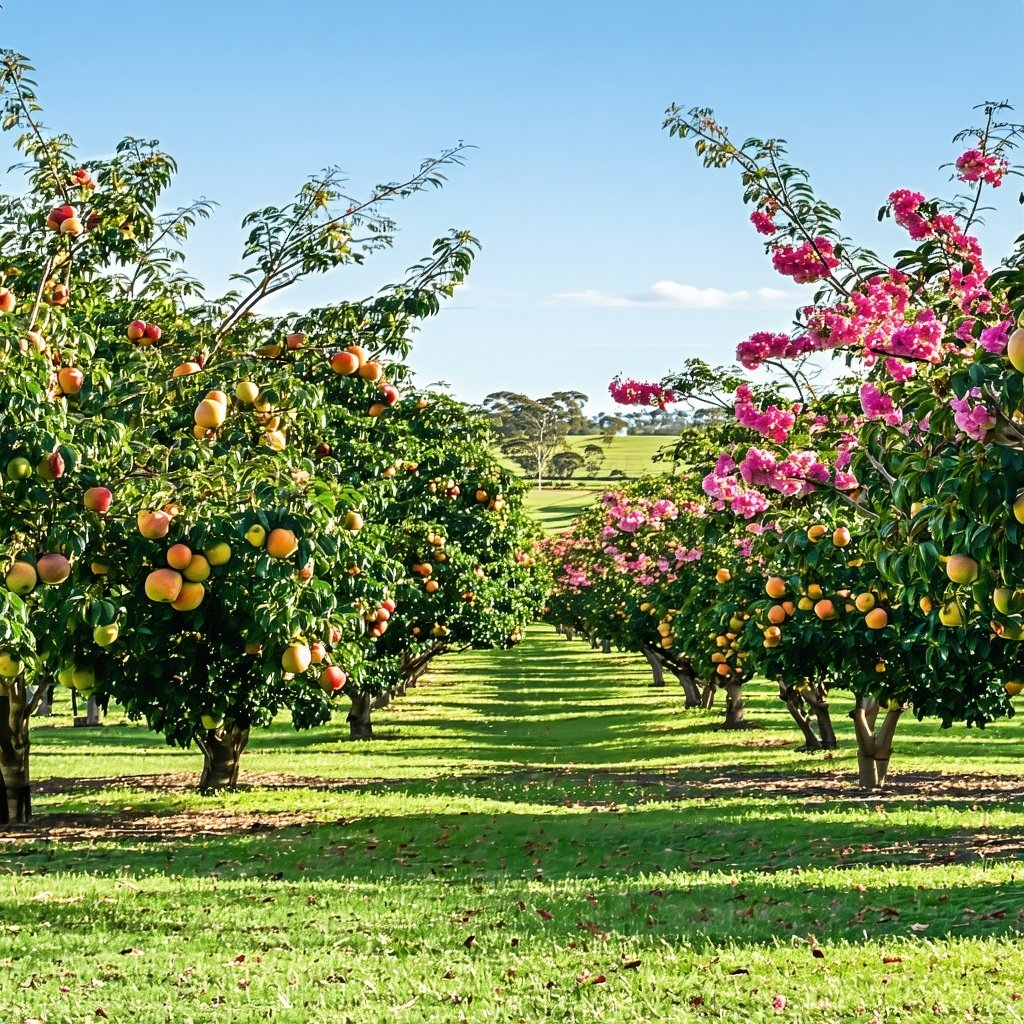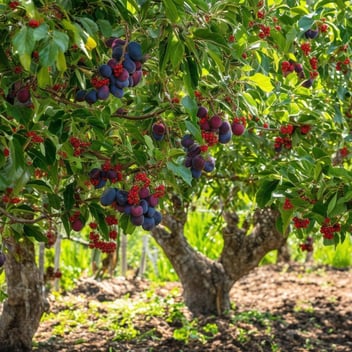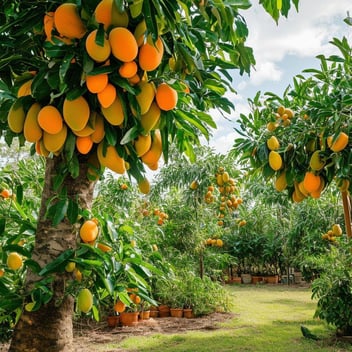Seasonal Care Tips for Fruit Trees in SEQ's Subtropical Climate
Cultivating a thriving orchard in South East Queensland (SEQ) requires a nuanced understanding of the region's subtropical climate. With hot, humid summers and mild, dry winters, fruit trees in SEQ demand tailored care throughout the year to ensure robust growth and bountiful harvests.
1. Spring: Awakening and Preparation
Pollination and Flowering
As temperatures rise in spring, fruit trees emerge from dormancy, initiating flowering and pollination processes. To enhance pollination, introduce companion plants like lavender and basil to attract beneficial insects such as bees and hoverflies. Maintaining consistent soil moisture during this period supports optimal fruit set.
Fertilization and Mulching
Apply a balanced, slow-release fertilizer to replenish nutrients depleted during winter. Mulching with organic materials like sugarcane or lucerne helps retain soil moisture, suppress weeds, and regulate soil temperature.
2. Summer: Growth and Vigilance
Water Management
The intense heat of SEQ summers necessitates vigilant watering practices. Deep, infrequent watering encourages deep root growth, enhancing drought resilience. Mulching continues to play a crucial role in moisture retention.
Pest and Disease Control
Warm, humid conditions can lead to increased pest activity. Regularly inspect trees for signs of pests like fruit flies and scale insects. Implement integrated pest management strategies, including physical barriers, biological controls, and organic pesticides, to mitigate infestations.
3. Autumn: Harvest and Maintenance
Fruit Thinning and Harvesting
As fruits mature, thinning excess clusters prevents branch overburdening and promotes the development of larger, higher-quality fruits. Harvest fruits at peak ripeness to enjoy optimal flavor and texture.
Post-Harvest Care
After harvesting, assess the tree's health and structure. Prune dead or diseased branches to maintain tree vigor and shape. This period also offers an opportunity to plan for the upcoming planting season.
4. Winter: Dormancy and Preparation
Pruning and Soil Enrichment
Winter's cooler temperatures induce dormancy in many fruit trees. Conduct structural pruning to remove deadwood and improve air circulation. Incorporate compost or well-rotted manure into the soil to enhance fertility in preparation for spring growth.
Pest and Disease Monitoring
Despite reduced activity, continue monitoring for pests and diseases. Apply dormant oil sprays to control overwintering pests and fungal spores.
5. Year-Round Best Practices
Soil Health and Nutrition
Regularly test soil pH and nutrient levels to ensure optimal growing conditions. Adjust soil amendments accordingly to maintain a balanced environment conducive to fruit tree health.
Tree Support and Protection
Install stakes or trellises to support young or top-heavy trees, preventing wind damage. Use protective netting to shield fruits from birds and other wildlife.
By aligning fruit tree care with SEQ's seasonal rhythms, gardeners can cultivate resilient trees that yield abundant, high-quality fruits year after year.




